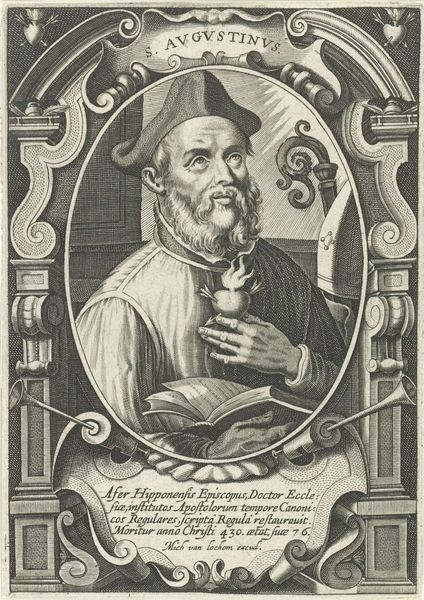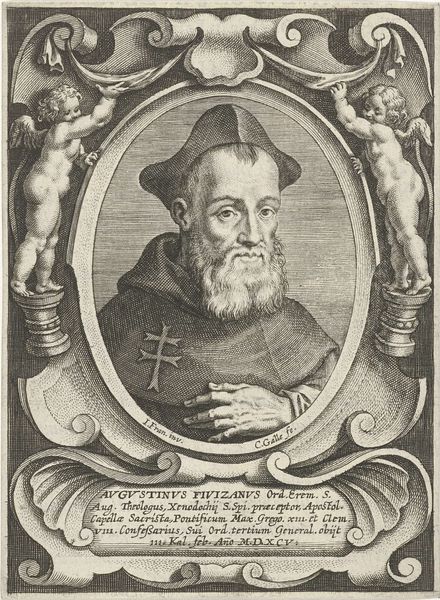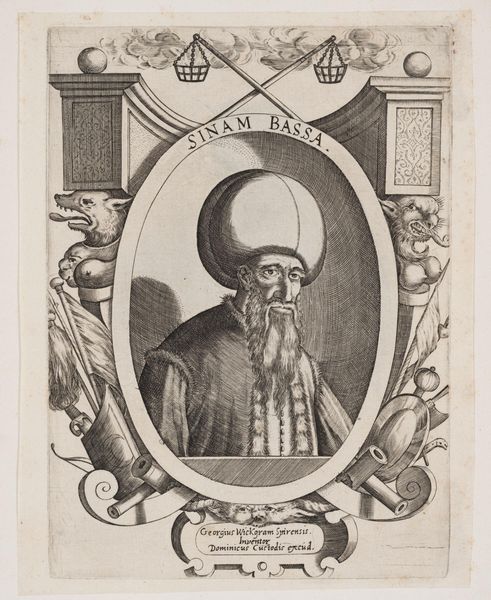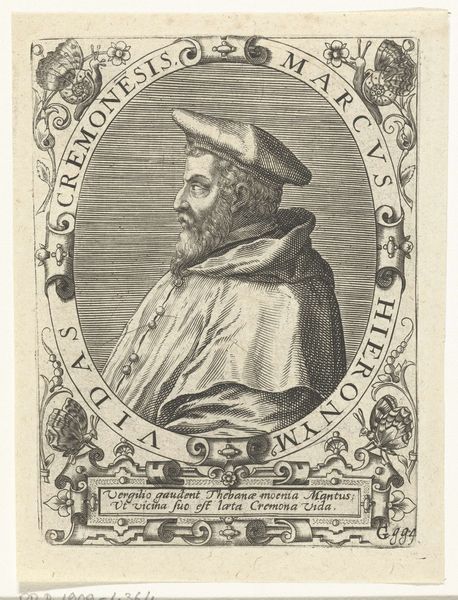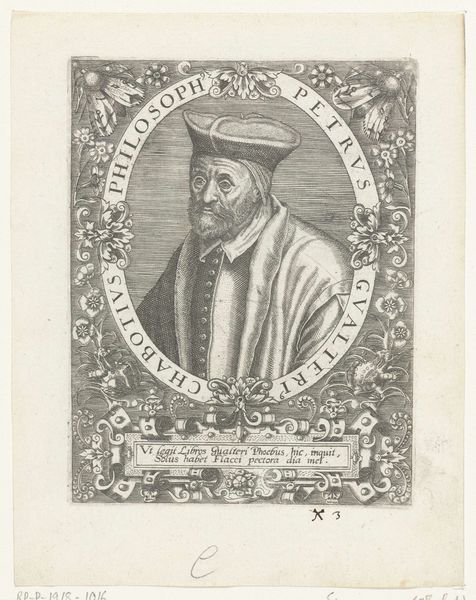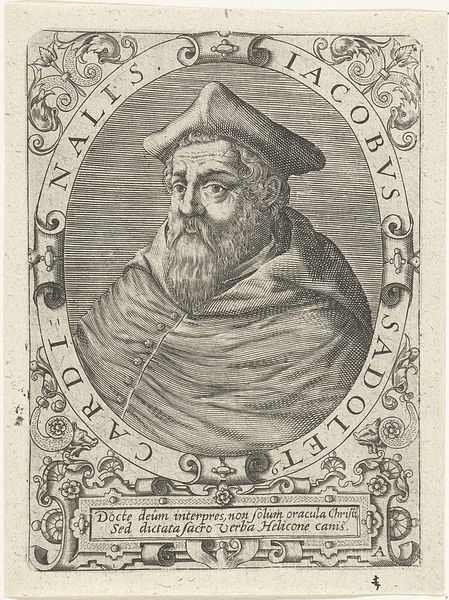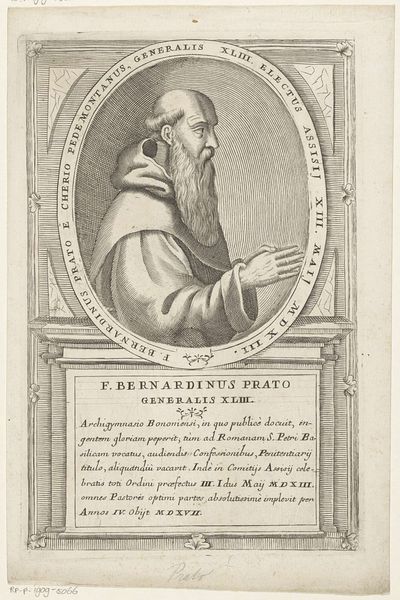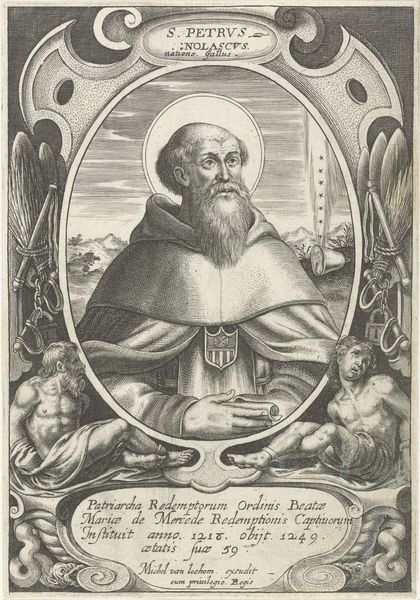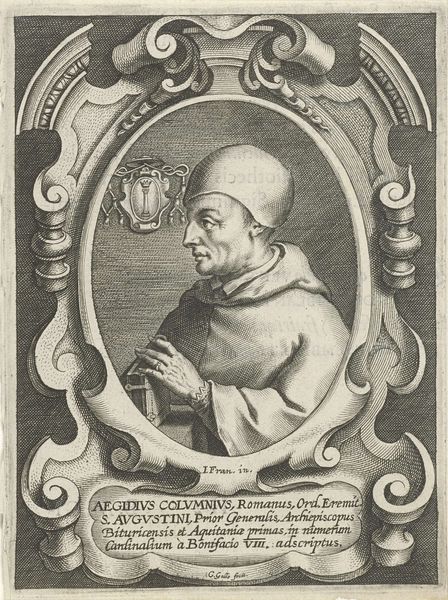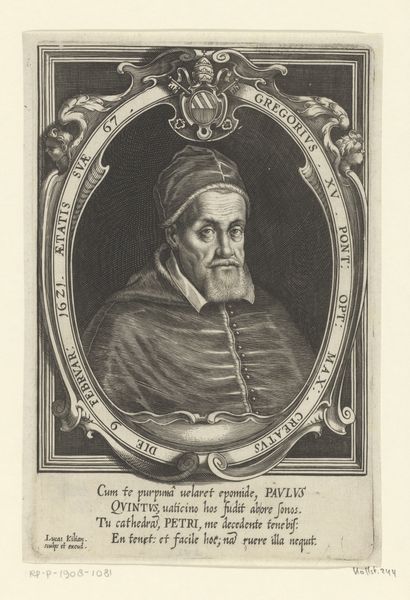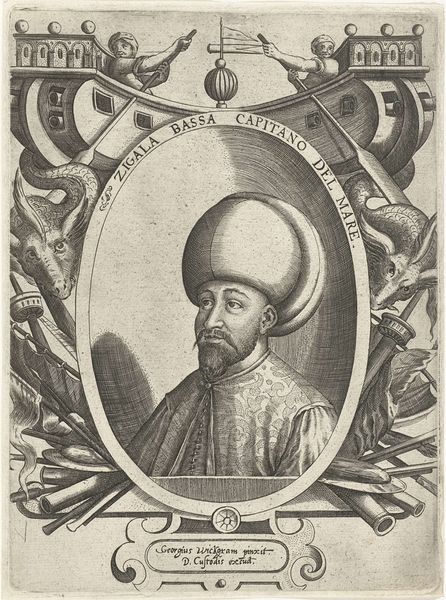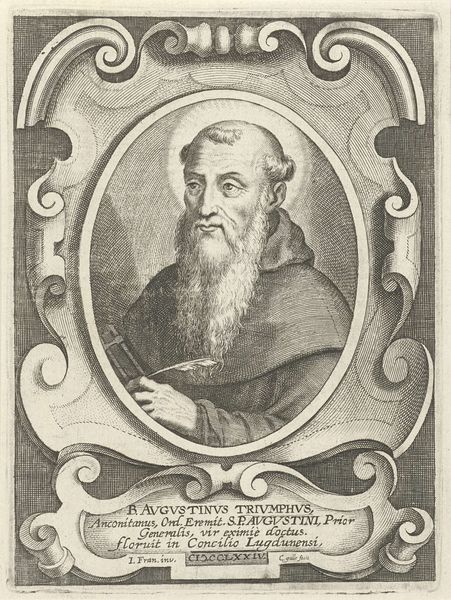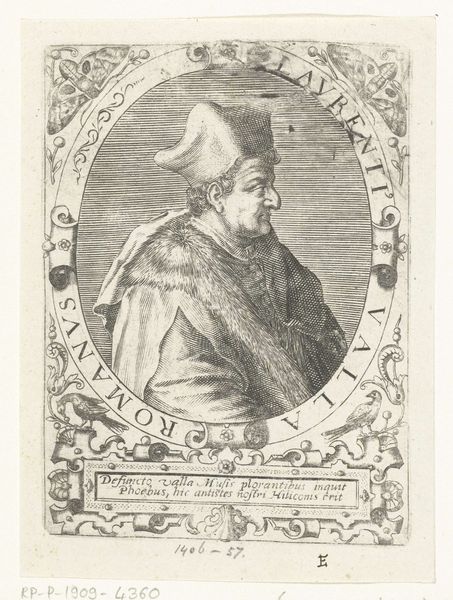
print, engraving
#
portrait
#
baroque
# print
#
old engraving style
#
engraving
Dimensions: height 150 mm, width 105 mm
Copyright: Rijks Museum: Open Domain
Curator: What an interesting image we have here. This is "H. Laurentius Justinianus," an engraving by Cornelis Galle I, dating from around 1586 to 1633. It's currently held at the Rijksmuseum. Editor: It's a compelling portrait, even in the limited palette of an engraving. He seems almost melancholic, thoughtful. The texture in the beard is fascinating given the medium, and I notice he is clutching a small cross in his left hand. Curator: Galle really displays his skill. Look at the frame itself, the elaborate ornamentation – you see the dedication to detail, the fine lines creating those layered effects. These prints, of course, were produced for a market. Consider the labour invested in reproducing religious figures like this, turning them into devotional objects accessible to a wider audience. Editor: Exactly, and it moves beyond devotional itself – there’s a market emerging there too. Think about the engraver as an artisan. He's interpreting someone else’s vision, translating it into something reproducible. We see Galle putting a lot of craftsmanship into that reproduction. Curator: He captures not only a likeness but an essence. It’s as much about craft, the actual skilled process, as it is about conveying religious meaning, almost transcending it, wouldn’t you say? Editor: Definitely. And thinking materially again, the copper plate that would have been etched – imagine the time and skill required! We tend to overlook that tactile engagement with the materials, which directly influence the image. Consider too the societal influence of such prints – they become tools of religious and cultural power, reproduced and disseminated widely. Curator: That's something I keep coming back to, just that combination of technical skill and a hint of true emotionality, all rendered through the physical labour that engraving requires. It feels timeless and human at the same time, you know? Editor: Absolutely. By thinking of its making, it really reveals layers about production and the relationship between artist and material, image and context, viewer and subject – and what could be more central to the dialogue we strive to achieve when observing and discussing a work like this.
Comments
No comments
Be the first to comment and join the conversation on the ultimate creative platform.
